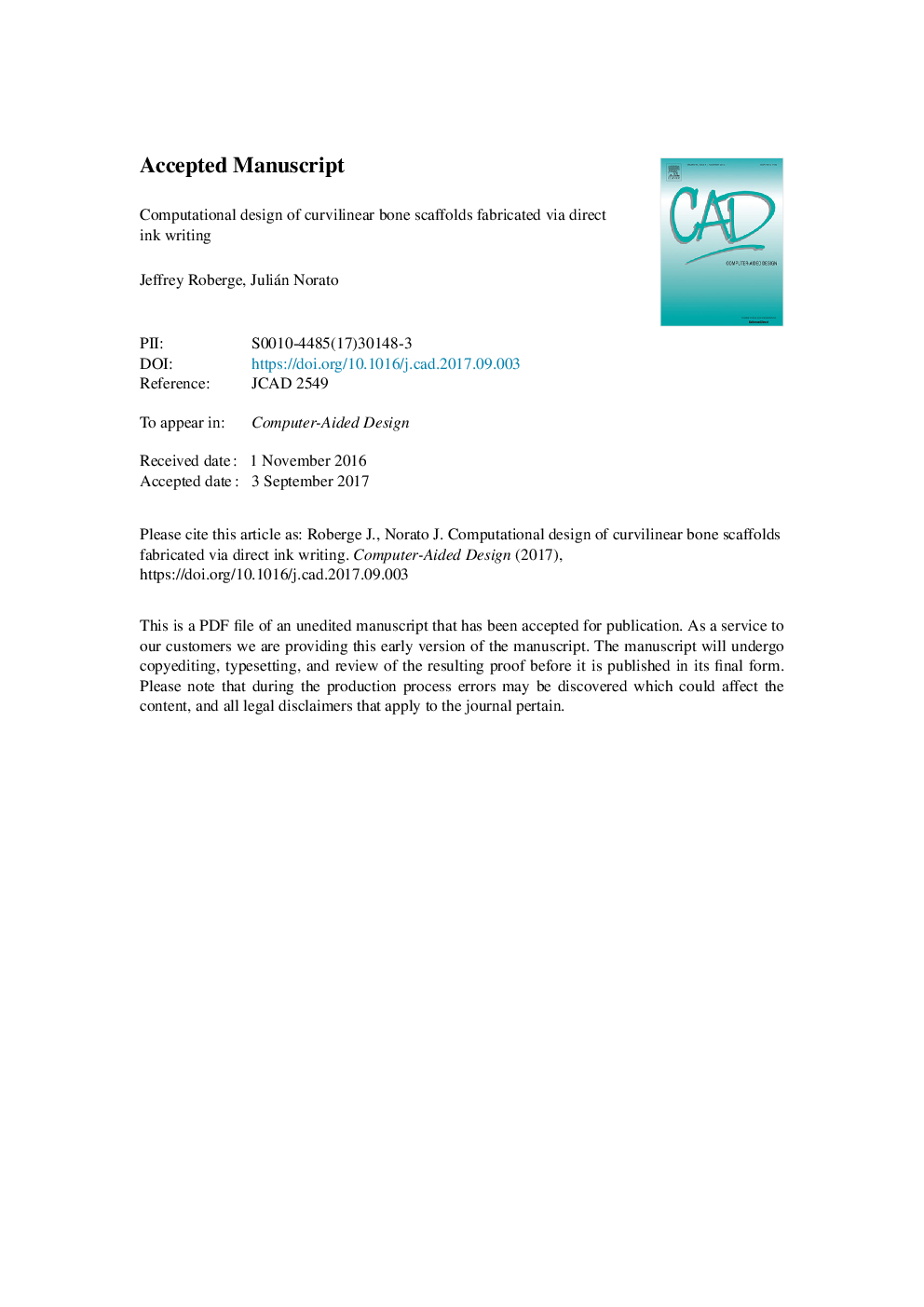| کد مقاله | کد نشریه | سال انتشار | مقاله انگلیسی | نسخه تمام متن |
|---|---|---|---|---|
| 4952535 | 1442469 | 2018 | 17 صفحه PDF | دانلود رایگان |
عنوان انگلیسی مقاله ISI
Computational design of curvilinear bone scaffolds fabricated via direct ink writing
ترجمه فارسی عنوان
طراحی محاسباتی داربست های استخوانی منحصر به فرد ساخته شده از طریق نوشتن مستقیم جوهر
دانلود مقاله + سفارش ترجمه
دانلود مقاله ISI انگلیسی
رایگان برای ایرانیان
کلمات کلیدی
داربست استخوان، طراحی برای ساخت، بهینه سازی ساختاری، نوشتن مستقیم جوهر
موضوعات مرتبط
مهندسی و علوم پایه
مهندسی کامپیوتر
گرافیک کامپیوتری و طراحی به کمک کامپیوتر
چکیده انگلیسی
Bone scaffold porosity and stiffness play a critical role in the success of critical-size bone defect rehabilitation. In this work, we present a computational procedure to design ceramic bone scaffolds to provide adequate mechanical support and foster bone healing. The scaffolds considered in our study consist of a lattice of curved rods fabricated via direct ink writing. We develop cellular solids models of the scaffold's effective elastic constants as functions of its geometric parameters, up to some unknown coefficients. To determine numeric values for these coefficients, we execute a computational design of experiments whereby effective elastic properties are obtained using numerical homogenization with the finite element method. In order to automate these experiments and circumvent re-meshing for every scaffold geometry, we project a representative volume element of the scaffold onto a fixed uniform mesh and assign an ersatz material for the analysis. We use these calibrated models in conjunction with finite element analysis and efficient gradient-based optimization methods to design patient-specific scaffolds (i.e., shape, location, and loading) by varying geometric parameters that can be controlled in the fabrication, namely the separation between rods in the lattice, and the printing path of the rods. At present, our methodology is restricted to 2-d idealizations of flat bones subject to in-plane loading. The optimization procedure renders element-wise values of these parameters. As this representation is not amenable to fabrication, lastly, we generate the final scaffold geometry by posing a differential equation whose solution is a function such that its level set lines at specified values correspond to the directrices of the rods in the scaffold. We present examples where we perform the maximization of stiffness of a scaffold implant with a constraint on porosity.
ناشر
Database: Elsevier - ScienceDirect (ساینس دایرکت)
Journal: Computer-Aided Design - Volume 95, February 2018, Pages 1-13
Journal: Computer-Aided Design - Volume 95, February 2018, Pages 1-13
نویسندگان
Jeffrey Roberge, Julián Norato,
